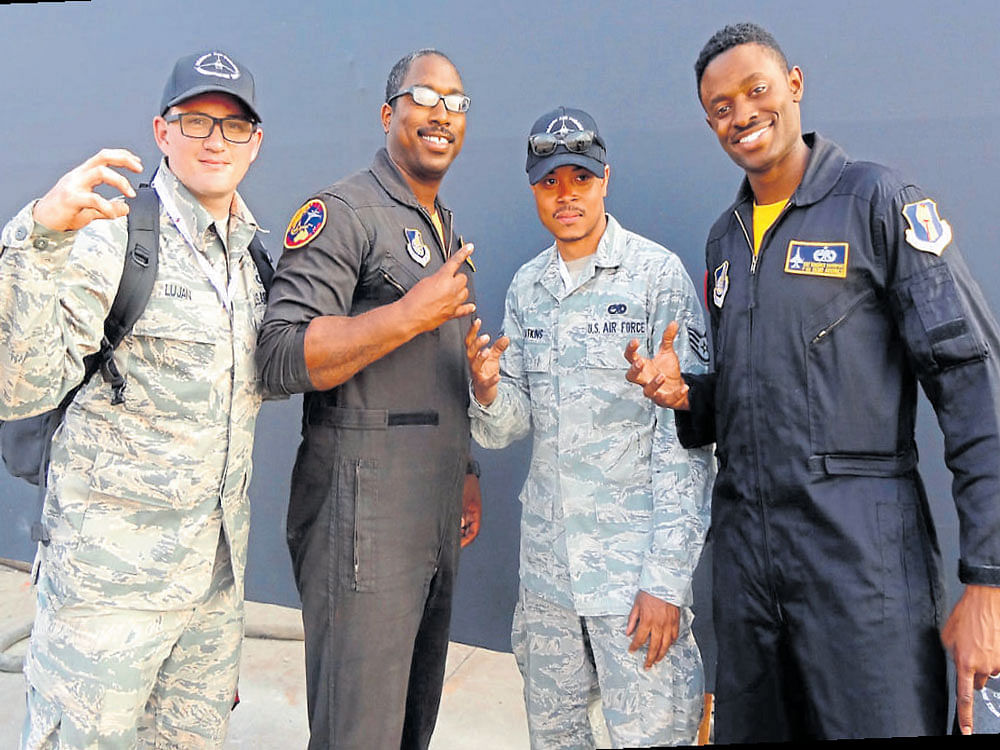
On the face of it, one just gets to see the aircraft take off, go on a spin in the skies and land but there are also elaborate processes on the ground that make these activities possible without a hitch. And making sure everything is perfect is the technical team of the aircraft. They train just as hard as the pilots to keep the aircraft in good condition and make the maneuvers possible.
The technicians, who sometimes are pilots as well, undergo months of training before they handle and understand the mechanics of an aircraft.
Jonas Jakobsson, test pilot of Gripen, the pride of the Swedish Air Force, is well-versed with the aircraft that he works on. Gripen has undergone several design changes and advancements to be where it is today.
“Historically, we used to build aircraft that were specified for different types of missions. We had fighter aircraft to shoot down enemy planes and anti-surface aircraft to attack surface targets. But we thought that this was a bad idea and decided to manufacture a single aircraft that could perform all these operations together. Now, all the Gripens have been converted into multirole aircraft,” says Jonas.
Jonas elaborates on the latest technical stride made in Gripen. “Gripen E, which is the latest version being offered to India, is designed to do everything simultaneously. It can designate the target in the air and on the surface simultaneously,” he adds. He also says that it has in fact become easier to maintain the aircraft over the years. “Today, the Gripen has a self diagnostic system on board. It supervises itself which means it checks its own heart beat, ECG and will tell the ground crew if there’s any trouble and also suggests what needs to be done,” informs Jonas.
Meanwhile, one’s heart skips a beat whenever the F-16 fighter aircraft soars into the skies. And making that take off happen without a hitch is Roddricks, a demo avionics specialist and Watkins, the electrical engineer, both F-16 technicians. “My job is to make sure the wires are properly connected and the landing systems are in place before the aircraft takes off,” says Watkins, who has undergone six months of training before he joined work.
Maintaining the navigation wing requires at least 10 months of rigorous training, says Roddricks. “The aircraft has been flying for many years now and gets its job done repeatedly. This is a very reliable aircraft that’s designed to do a lot of maneuvers at high capability,” says Roddricks.
Squadron leader Sahil Gandhi belongs to the ‘Surya Kiran’ aerobatics team. The team presently uses the Hawk MK 132 aircraft and Sahil says that this aircraft is a faster one when compared to the previous aircraft that was operated by the team. “This aircraft is electronically intrinsic in nature. This not only makes maintaining it a challenge but also more susceptible to failure,” explains Sahil. He says that they have a maintenance team of 60 people headed by a technical officer who maintain the aircraft on a day-to-day basis.
Fremiot Thomas, ground crew of the French Air Force, is attached to the Rafale aircraft. He says he takes care of the protection of this French aircraft. “I can’t reveal technical details of my job but I make sure that the aircraft is ready for combat at anytime. We get the plane weapon ready,” explains Fremiot, who is also trained in combat fighting.
While the modern jets have a different yet complicated character, ‘Tiger Moth’, which is a vintage aircraft was built in 1942, using the technology of 1930s. It requires delicate handling, says Squadron leader Deepash Yadav, the technician of this aircraft.
“The challenging part is in procuring the spare parts of this aircraft which are not available in the country anymore. The aircraft is made of wood and fabric, so one can’t really apply too much pressure on any part of the plane because it will break,” says Deepash. “We also have to use reverse engineering when repairing the aircraft.
You can’t afford to experiment with an aircraft. Everything must be done to precision,” adds Deepash.